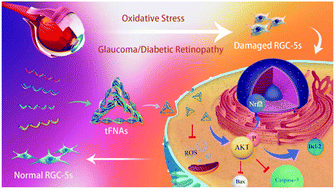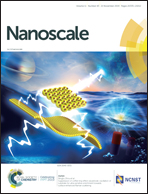Tetrahedral framework nucleic acids prevent retina ischemia-reperfusion injury from oxidative stress via activating the Akt/Nrf2 pathway
Abstract
Retinal ischemia-reperfusion (I/R) injuries are involved in the universal pathological processes of many ophthalmic diseases, including glaucoma, diabetic retinopathy, and retinal arterial occlusion. The reason is that the ischemia-reperfusion injury is accompanied by the abnormal accumulation of reactive oxygen species (ROS), which can cause damage to retinal ganglion cells (RGCs), promote their apoptosis, and finally lead to the irreversible loss of the visual field. RGCs are specialized projection neurons that are situated in the inner retinal surface of the eye, and they transmit visual images into certain areas of the brain in the form of action potentials. Therefore, any damage that affects the viability of RGCs can cause visual field defects or even irreversible vision loss. There is no effective drug treatment in clinical practice for the loss of the visual field that is caused by the oxidation and apoptosis of RGCs. Hence, finding a drug with neuroprotective and antioxidant functions is urgently needed. As a new type of nanomaterial, tetrahedral framework nucleic acids (tFNAs) exhibit outstanding biocompatibility and have been shown in our previous studies to participate in the positive regulation of cell behavior. In this experiment, we first established a cellular model of oxidative stress in RGCs with tert-butyl peroxide (TBHP). Then, we primarily explored the antioxidant and neuroprotective effects of tFNAs after TBHP-induced oxidative stress and the main mechanisms by which the tFNAs function. Our research showed that tFNAs could reduce the production of reactive oxygen species (ROS) in cells and protect the cells from oxidative stress by regulating intracellular oxidation-related enzymes. In addition, tFNAs could simultaneously improve oxidative stress-induced apoptosis significantly via affecting the expression of apoptosis-related proteins. Finally, we confirmed by western blotting that the mechanism by which tFNAs prevent damage caused by oxidative stress involves activating the Akt/Nrf2 pathway. Our findings provide new ideas for the prevention and treatment of a series of diseases that are caused by oxidative stress to RGCs.



 Please wait while we load your content...
Please wait while we load your content...